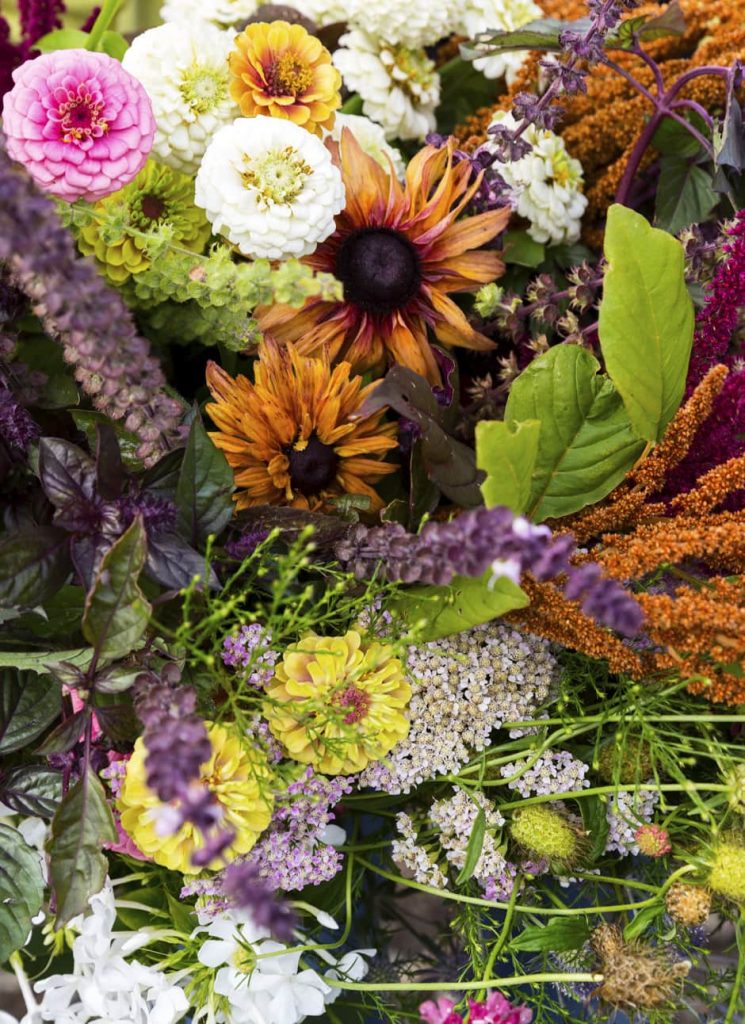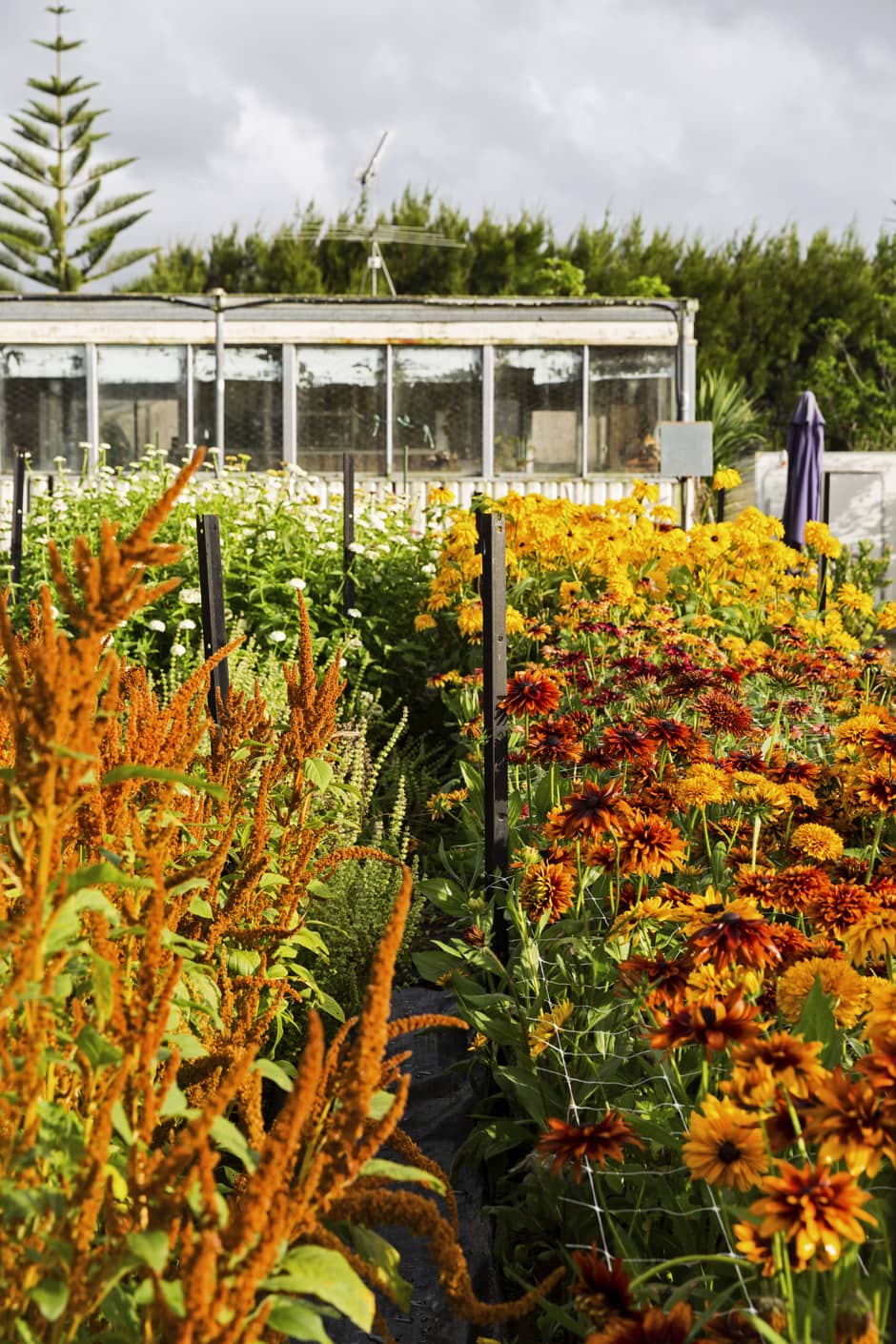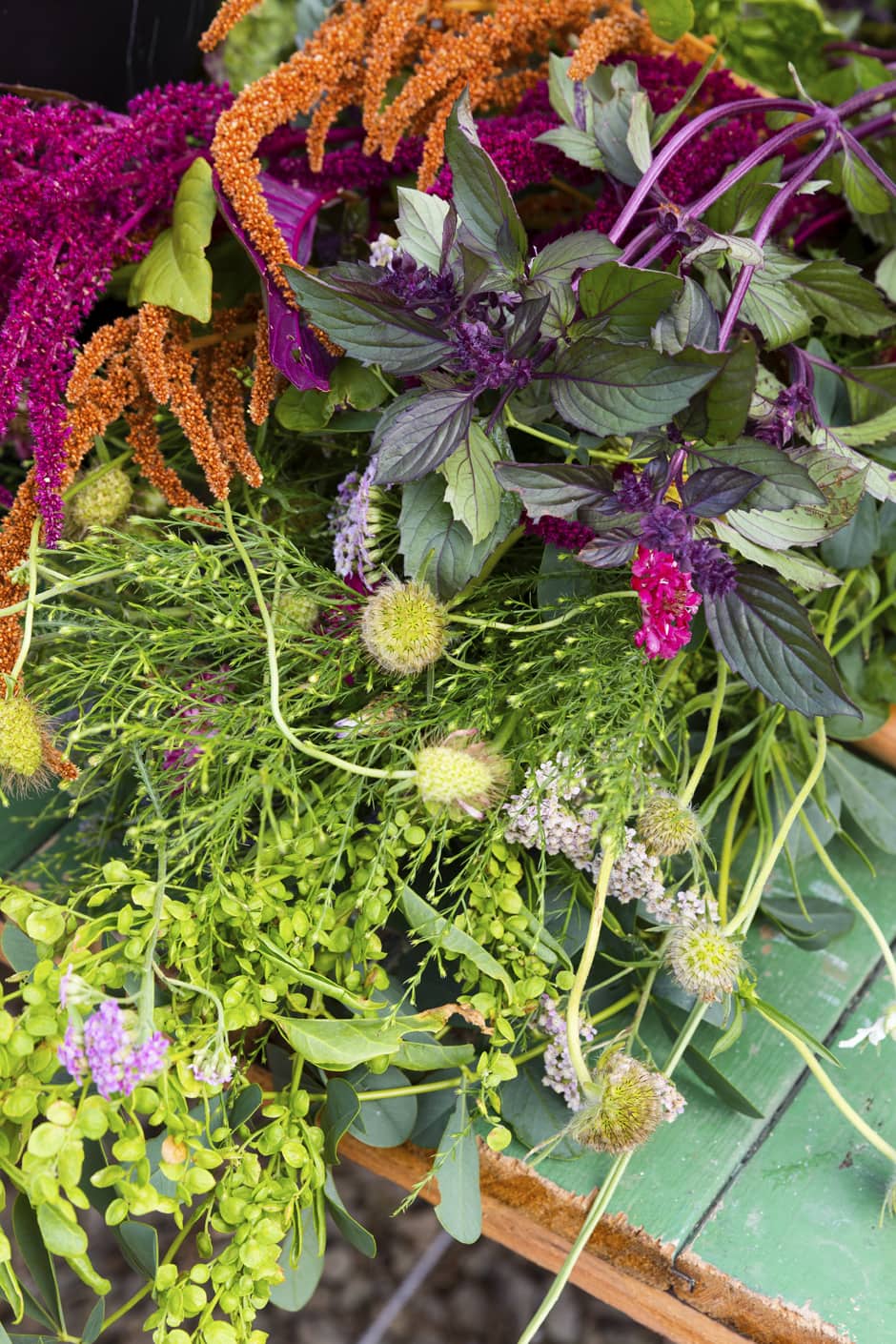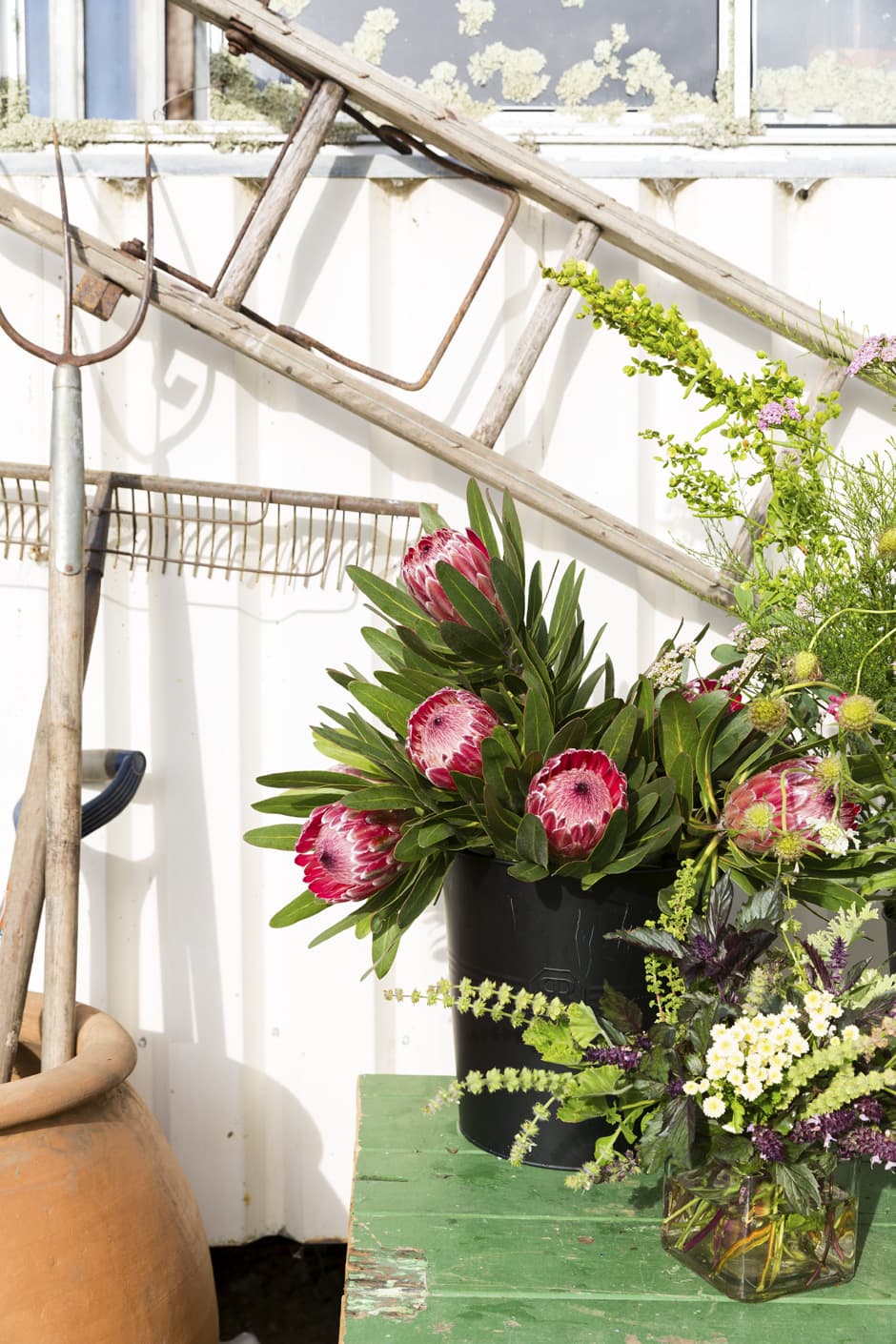Heavenly flower farm Paradiselost could not be more aptly named. We visited to see how the gardens grow.
Debbie Majurey and her partner Alan Heslop had been looking for a place to put the 1000-plus bird-of-paradise plants he’d spent years growing – and 2012, they found it and moved with their family from the city to a small lifestyle block in Kaipara. They began to take the bird-of-paradise blooms to auction, set about propagating and selling some of the actual plants, and then…
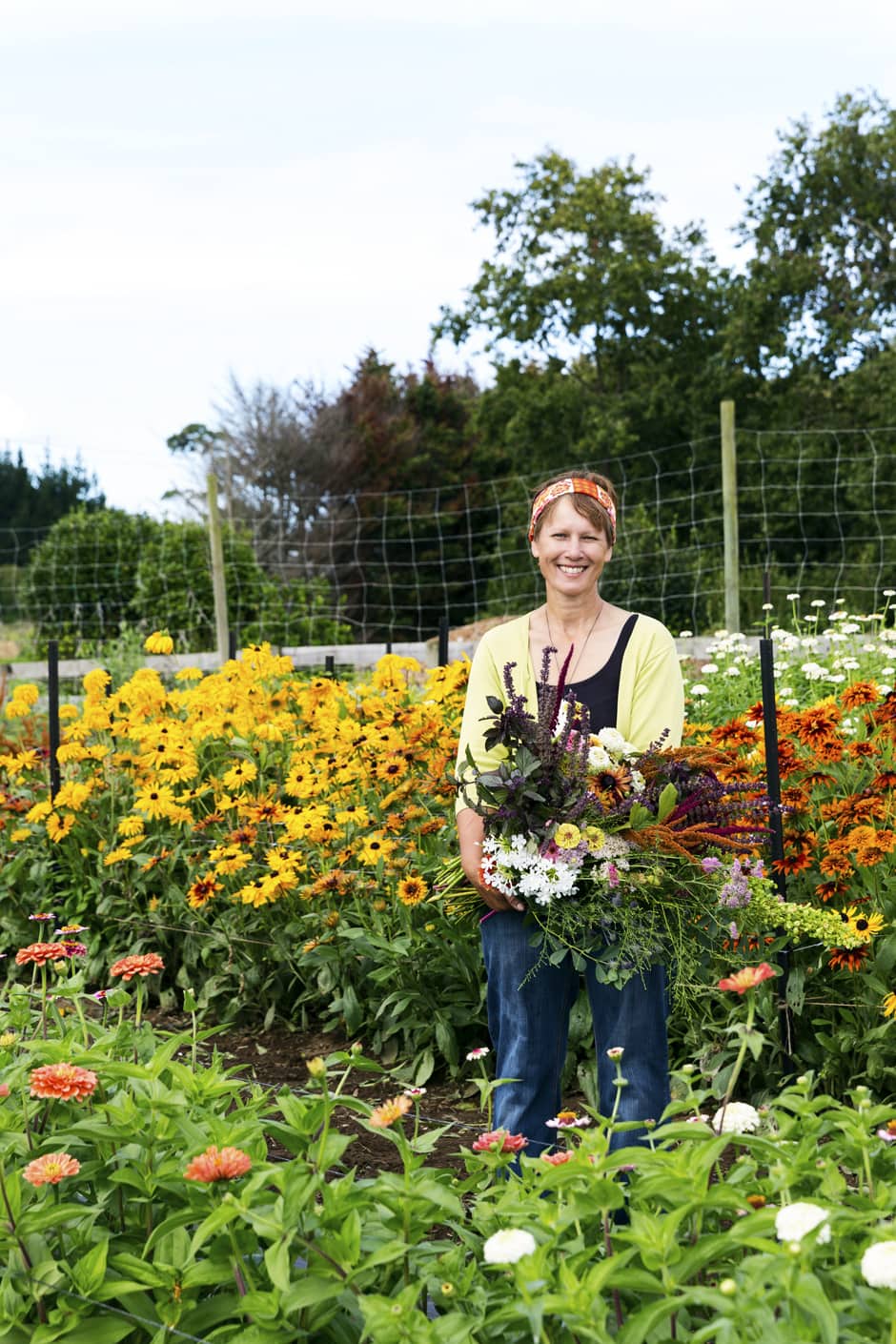
Debbie, how did you become a farmer-florist? It kind of just happened. As well as the bird-of-paradise, Alan and I decided to grow some of the other flowers we loved but hadn’t had the opportunity to grow in the city, and planted garlic, beans, Maori potatoes and kumara too. Impressed by its strong focus on sustainability and community, I started selling our produce at Auckland’s Grey Lynn Farmers’ Market, and also took along some bird-of-paradise flowers and other small floral offerings. My love of arranging quirky, seasonal bunches grew from there.
I grew up loving the adventures I was able to have with my siblings on our family farm and at our bach, a shepherd’s hut by the sea with no electricity. Getting my hands in the soil, riding horses bareback on the beach and lying down in a freshly mown hay paddock were all such grounding and spiritual experiences. Now, it really is a thrill to see the process of growing from seed to vase, and to feel that connection to the land like my dad had.

What’s the seasonal, local, sustainable flower movement all about? In the same that way people are drawn to eating great local, seasonal food, they’re drawn to local, seasonal flowers. Growing them is not an easy road, that’s for sure, and the hours are long. But you meet some amazingly talented and passionate people along the way. As well as taking part in an online workshop run by Erin Benzakein of Floret in Washington – one of the leaders in
this movement – I’ve been fortunate to connect with a group of New Zealand flower farmers through Facebook. Here we are in this growing group, swapping ideas, seeds and our hopes and dreams to become more diverse and unique in what we can provide seasonally right here in Aotearoa. I think that’s pretty special.
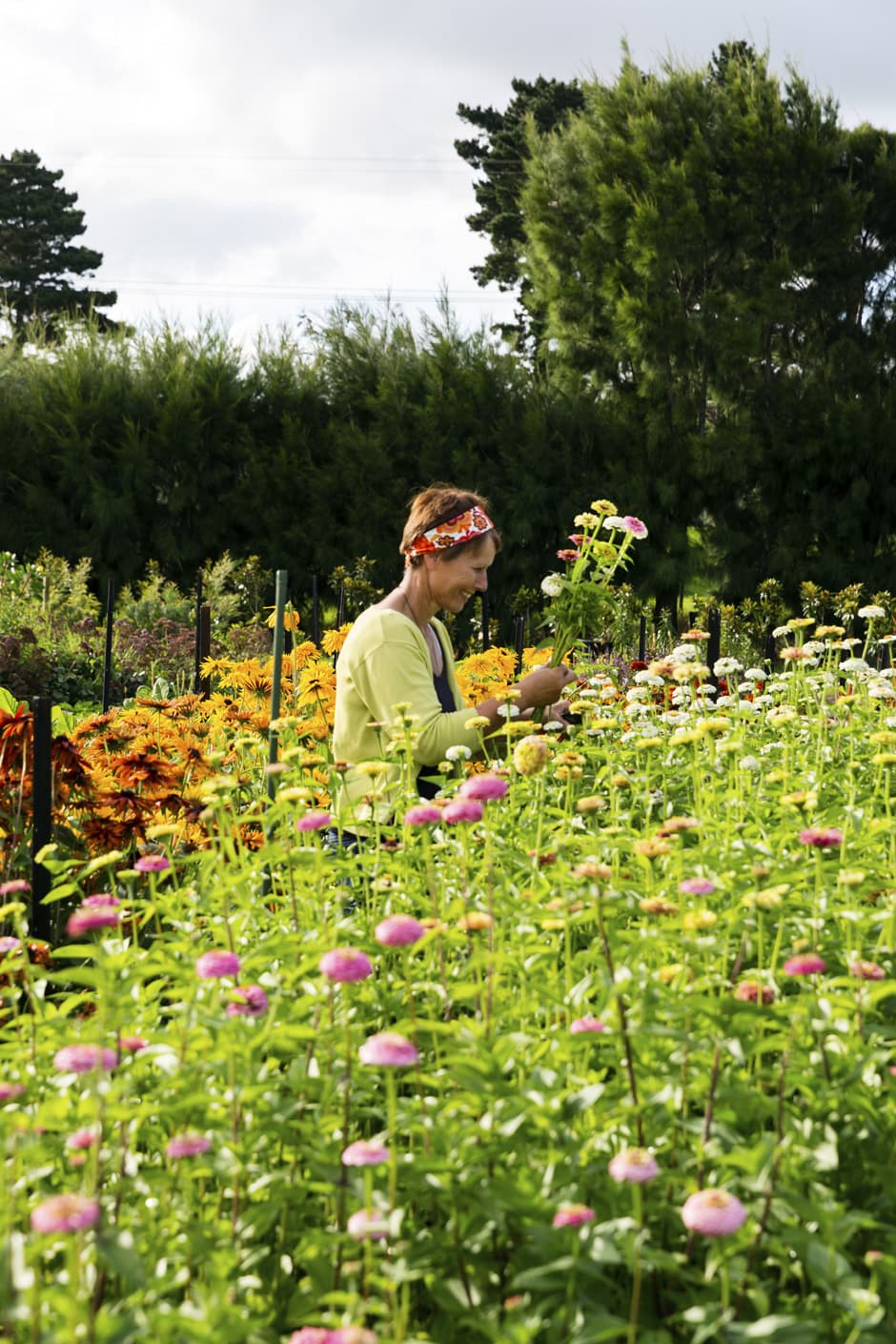
What does the average day on the farm look like? After checking my emails, I’m out in the garden early, sometimes picking for a florist, and weeding, deadheading, putting in supports for new plants, checking the irrigation is working, planning next year’s garden. At the moment, I’m cleaning up and prepping beds ready for autumn planting and getting ready to start off several varieties of seeds so I’ll have early flowers in spring.
In the early evening, I pick then put together orders for florists, and during the weekend I make arrangements for the Grey Lynn Farmers’ Market and Pt Chevalier food store Mars Salt and Sweet.

Why did you choose the particular plants you grow? I wanted to grow flowers that were unusual and had a wildness to them, and scent and texture as well as colour. Each season and each year, we look at how we can bring more diversity and sustainability to the farm by introducing new plants, shrubs and trees. So far, we’ve had great success with the annual rudbeckias ‘Goldilocks’, ‘Cherokee Sunset’ and ‘Sahara’ – their intense colours signal late summer.
As well as the bird-of-paradise, we grow a range of proteas, leucadendrons, leucospermums and foliage. The proteas in particular have been really successful, especially the king protea; they’re sought after by floral creatives and brides from March right through to November. In spring, it’s sweet peas, which fly out the door at the market.
Do you have any tips for those wanting to cultivate a cutting garden at home? Don’t let having a small space deter you. Take a walk around your neighbourhood and look for flowers that you love. Think about including first-year flowering annuals like cornflowers, zinnias and nigella.
It can be helpful to ask any flower-loving neighbours what they’re growing successfully. Or snap a photo of the flowers you love and take it to the garden centre – they’ll help you source the seeds and plants you need. Buying a cutting-garden seed mix is also a great idea because you’ll get a selection right from the start and have your garden flowering throughout spring and summer.
@paradiselostgardens
Interview Alice Lines
Photography Larnie Nicolson

